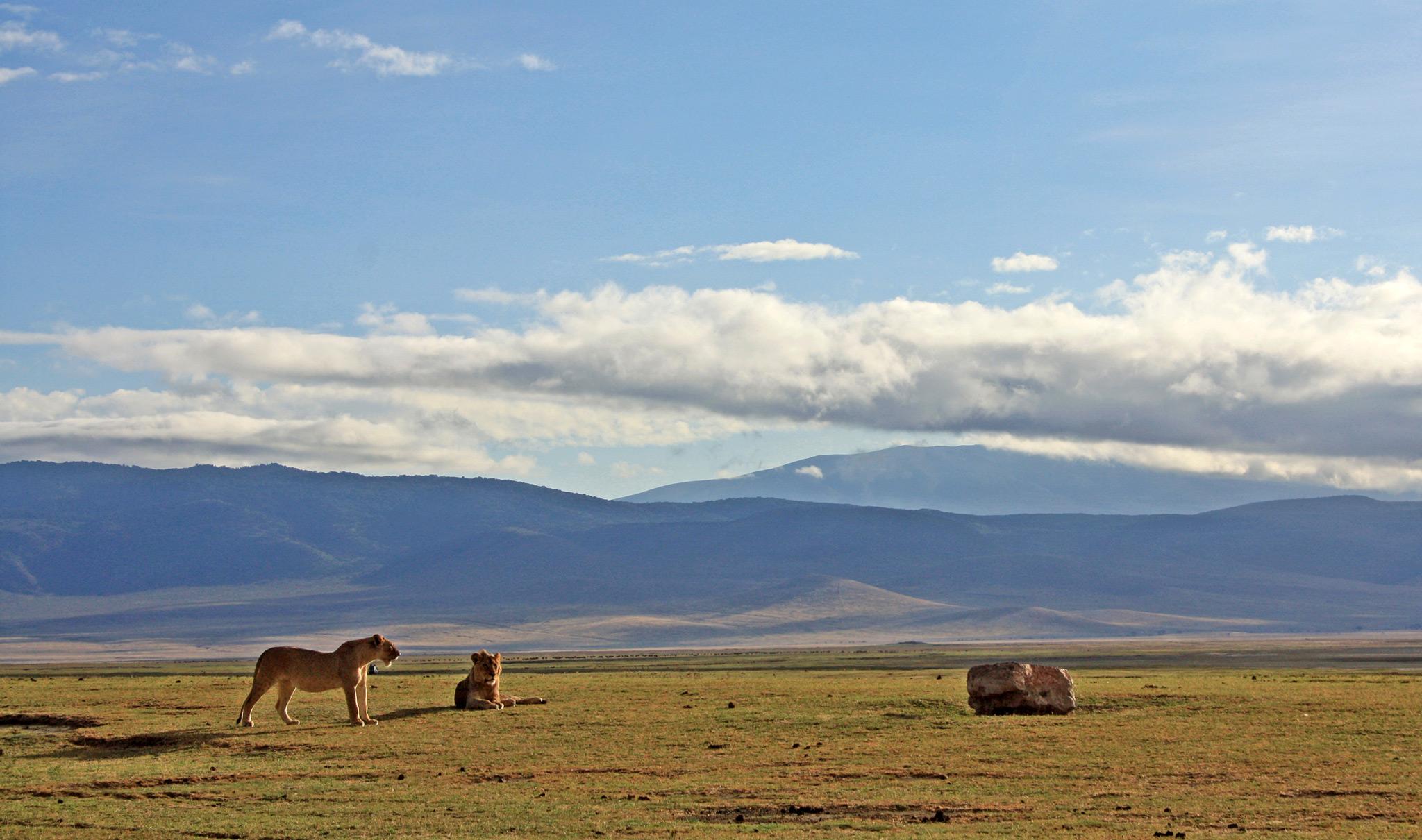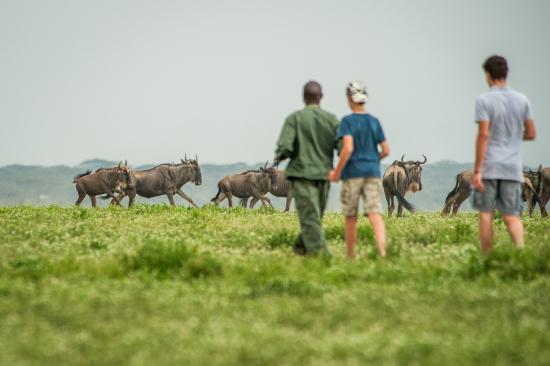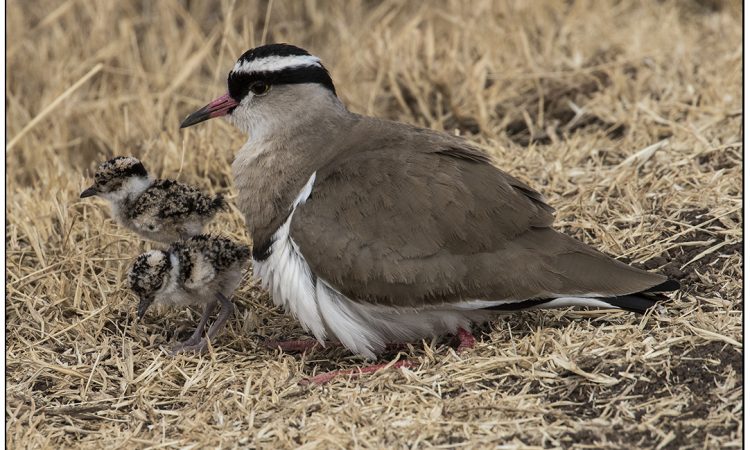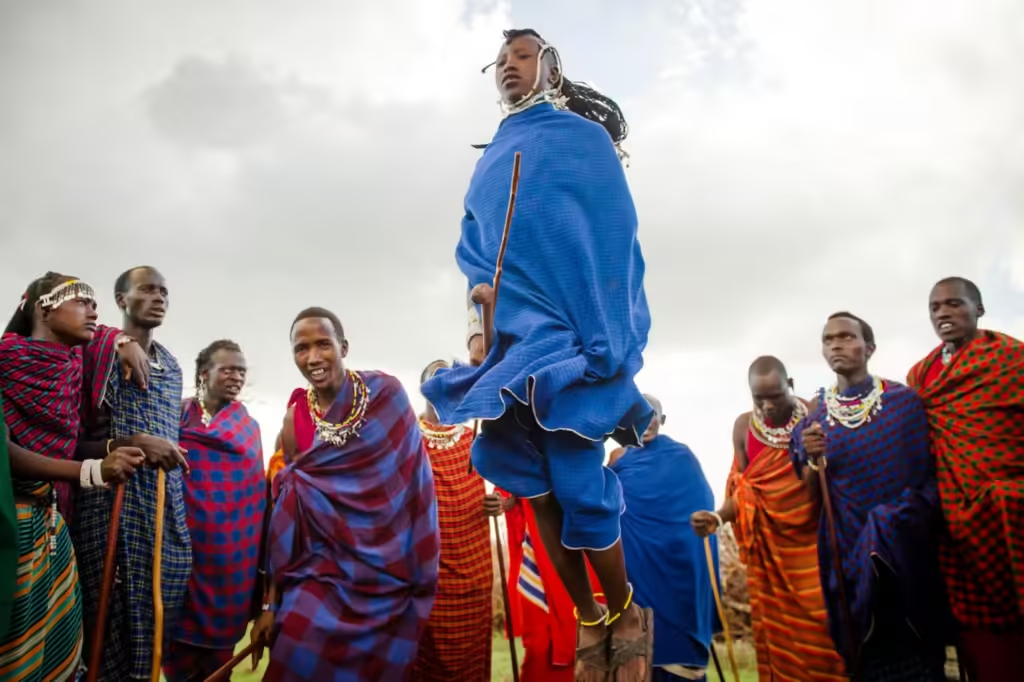Ngorongoro crater national park
Ngorongoro crater national park
Ngorongoro conservation area is a UNESCO World Heritage Site and one of the wonders of the world. It is in the northern part of Tanzania and is part of the northern safari circuit. It is about 153 kilometres west of Arusha town, which is a wonderful tourist safari destination in Tanzania. Ngorongoro conservation area is a rewarding destination to go on a safari in Tanzania. It is part of the Serengeti ecosystem, and Ndutu region is where this conservation area and the southern part of Serengeti national park meet. Serengeti national park is right next to the Ngorongoro conservation area. Ngorongoro conservation area is 50 kilometres from Lake Manyara national park, 139 kilometres from Tarangire national park, and 213 kilometres from Arusha national park.
Ngorongoro crater is the area’s intriguing safari attraction. It is the world’s largest unbroken volcanic caldera and is 2,000 feet deep and 260 square kilometres wide. Ngorongoro crater emerged as a result of volcanic explosion and after its formation it collapsed in about 2-3 million years ago. Because Ngorongoro crater, it was named a world Heritage site of global significance in 1979. Aside from the Ngorongoro crater, Ngorongoro reserve area has other beautiful safari destinations that are also highlights of Tanzania safaris in this area. Oldupai or Olduvai Gorge, which is known as the “cradle of man,” is one of these features. Olduvai Gorge is a mysterious archaeological site where the remains of the first humans on earth were found by paleoanthropologists Louis Leakey and his wife Mary Leakey in the 1950s. There are also Laetoli footprints, Nasera rock, and the Olduvai Gorge Museum in the Ngorongoro protection area. Ngorongoro conservation area extends throughout the area of 8,292 square kilometers with scenery that consists of a variety of physical features such as lakes, craters, swamps and many more.


Attractions in Amboseli national park.
Animal species.
Animal species.
Ngorongoro reserve area is an astonishing safari destination being the home of a lot of different kinds of animals to live in Tanzania. This is one of the reasons why it is one of the top destinations for wildlife tours in Tanzania. Ngorongoro protected area mostly consists of Over 250,000 large animals live in Ngorongoro crater. Grass plains rule the area west of the Gol Mountains, northeast of Ngorongoro crater, and around Lake Ndutu, which is close to the border of Serengeti national park. Predators like lions, spotted hyenas, cheetahs, leopards, black-backed jackals, golden-backed jackals, waterbucks, Bohor reedbucks, elands, antelopes, warthogs, hartebeests, wildebeests, serval cats, elephants, black rhinos, zebras, and many more can be found in the Ngorongoro crater.
Bird species.
Ngorongoro conservation area is a magnificent destination to go on a birding safari in Tanzania. It has over 500 bird species, both resident and migratory. Some of the birds you can see there are thousands of lesser flamingos living in Lake Magadi, a salt lake on the floor of the crater, hornbills, turacos, goshawks, harriers, ostriches, kori bustards, Most of the birds in the Ngorongoro protection area live near Lake Ndutu, Empakaai crater lake, and the many grasslands in the savannah.
Game drive.
Ngorongoro conservation area is a wonderful safari destination to go on a Tanzania game viewing safari because it has great views of animals at work. You can see animals in the Ngorongoro conservation area by taking a 4X4 vehicle down through the lush forests to the crater floor. Game viewing sessions include a morning game drive, a full-day game drive, afternoon game drive and a night game drive. The morning game drive is the best time to see big cats like lions and leopards hunting for food. The night game drive is great for seeing predators like lions, leopards, and wild dogs with the help of a spotlight.
Animals like lions, spotted hyenas, cheetahs, leopards, black-backed jackals, golden-backed jackals, waterbucks, Bohor reedbucks, elands, warthogs, hartebeests, wildebeests, serval cats, elephants, and black rhinos can be seen from the windows of your vehicle on a game drive.

Walking safaris.
Ngorongoro conservation area is finest destination for Tanzania walking safaris because it is a rewarding site to visit. Walking safaris in the Ngorongoro conservation area is the way to see the different tourist sites on foot with a safari guide. In Ngorongoro conservation area, you can go on different kinds of walking tours, such as short walks, crater rim walks, hikes to the Empakaai crater, climbs up the sides of the Olmoti volcano, and walks along Lake Eyasi.
These walks last from one to four hours and offer beautiful views of the crater floor and a lot of birds in the thick forest cover. Hike to the Empakaai crater is a full-day hike through the forests that surround the crater. Climb the flanks of the Olmoti volcano starts from the highlands camp and follows a trail through mountain forests, grasslands and outcrops to the summit of Olmoti Volcano.

Bird watching.
Ngorongoro conservation area is a bird lovers destinations and a must-see on a Tanzania birding safari. It is home to more than 500 kinds of birds, both permanent and temporary, who live in the forest crayons, grassland plains, lakes like Lake Magadi, and marshes. A variety of bird species such as hornbill, turaco, goshawk, harrier, ostriches, Kori bustards, crowned cranes, secretary birds, African spoonbill, capped wheatear, eastern double-collared sunbird, Egyptian vulture, fan tailed widow bird, fan-tailed widow bird, Hartlaub’s turaco, red and yellow barbet, scarlet-chested sunbird, white eyed salty flycatcher and many more are spotted on a birding safari in Ngorongoro conservation area. The best part of bird watching safari in Ngorongoro reserve area is spotting lesser flamingos and other water birds on Lake Magadi, a salt lake on the floor of the crater.

Cultural tours.
Cultural tours in Ngorongoro conservation area take tourists to see the interesting Masai people. Maasai people have a unique culture that hasn’t been changed much by modernity and technology, which is why they are one of the best groups to see on a cultural tour of Tanzania. Maasai communities border the Ngorongoro conservation area, and when tourists go on a Tanzania cultural tour in their community, they can learn more about the Maasai people’s beliefs, customs, and rules. In the Maasai community, other customary activities to do include going on tours of the cultural Bomas, trying out local foods, raising cattle, and wearing shukas and beautiful hand-made accessories like big, colorful necklaces.

